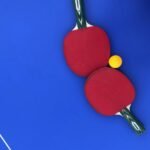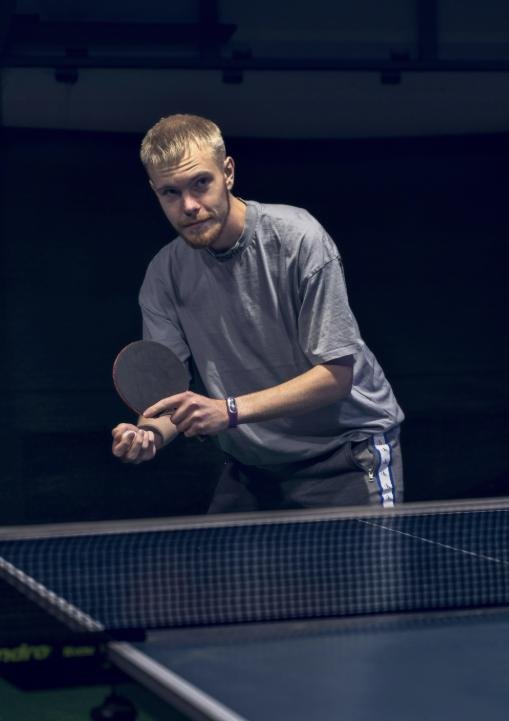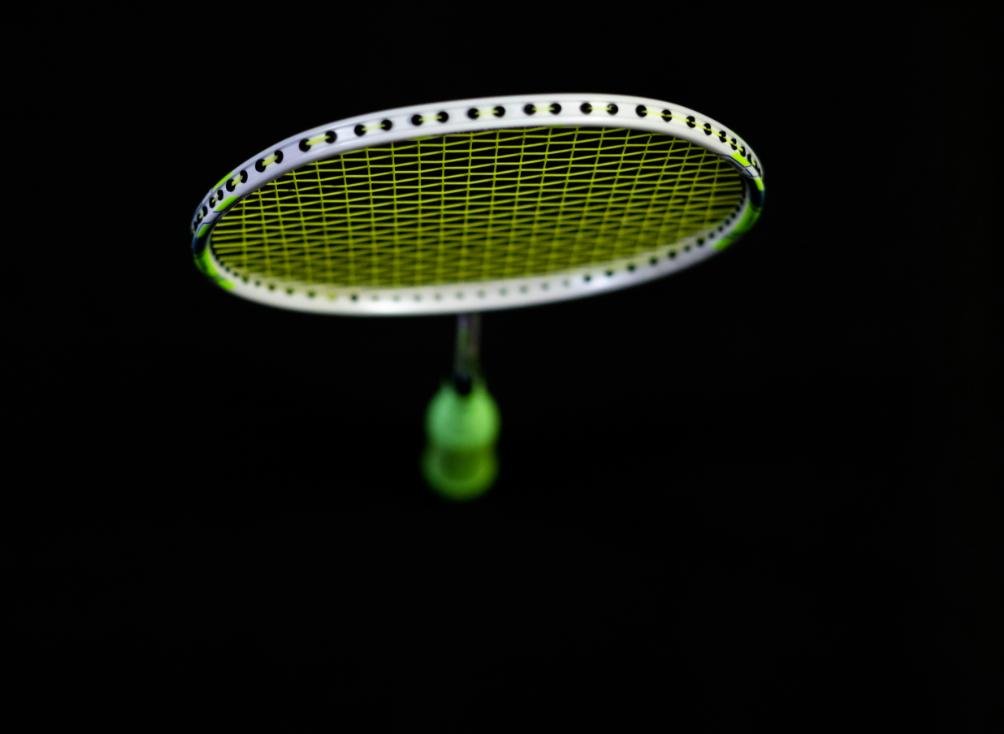Table tennis, often referred to as ping pong, is a sport characterized by its fast pace and highly technical nature. Understanding the fundamentals is essential for every player, regardless of proficiency. The three primary areas to focus on are grip, stance, and footwork, as these elements contribute significantly to improving one’s overall performance in the game.
The grip in table tennis has a substantial impact on how players control the ball. There are two main types of grips: the shakehand grip and the penhold grip. The shakehand grip resembles a handshake and provides a versatile foundation for both forehand and backhand strokes. Conversely, the penhold grip resembles holding a pen and allows for a more dynamic wrist movement, beneficial for adding spin. Each player may find one grip more comfortable and effective than the other, so experimenting with both can help determine the best fit.
A balanced stance is equally vital in table tennis. It allows players to move swiftly and maintain control over their shots. A well-balanced stance typically involves positioning the feet shoulder-width apart, slightly bending the knees, and keeping the weight evenly distributed. This alignment enables quick lateral movements and ensures readiness to react to an opponent’s shots. Players should practice maintaining this stance during various drills to ingrain the position into their muscle memory.
Effective footwork is the foundation of good positioning on the table. It allows players to reach the ball effectively and set up for strokes. Quick and agile movements, such as shuffling sideways or stepping diagonally, are essential to maintain an optimal distance from the table and prepare for both offensive and defensive shots. Incorporating footwork drills into practice sessions can enhance reaction times and improve overall gameplay.
By mastering these fundamental skills—grip, stance, and footwork—players can build a strong foundation on which to base their future table tennis development, setting the stage for more advanced techniques and strategies.
Practice Drills for Skill Enhancement
Improving table tennis skills requires not only dedication but also the right practice drills aimed at enhancing various aspects of the game. Here are several drills that focus on serving, forehand and backhand strokes, and defensive techniques to help players develop their skills effectively.
One fundamental drill for serving is the “Target Serve” drill. The goal of this exercise is to improve consistency and accuracy. Players should set up targets on the opposite side of the table, aiming to serve the ball to these designated spots. Start with stationary serves, focusing on different types of serves such as topspin, backspin, and sidespin. As you gain confidence, gradually increase the distance and challenge yourself with moving targets. This drill not only refines serving techniques but also heightens your tactical awareness when serving to an opponent.
For forehand and backhand strokes, the “Wall Rally” drill is highly effective. Players stand about three feet away from a wall and hit the ball against it using forehand and backhand strokes alternately. The objective is to maintain a continuous rally without missing. This drill improves stroke mechanics and hand-eye coordination. Additionally, focus on maintaining a balanced stance, ensuring an efficient use of your body while executing each stroke. To increase the challenge, you can add footwork by moving side to side after each shot, simulating in-game situations.
Lastly, integrating defensive techniques can be practiced with the “Shadowing Drill.” In this drill, players mimic defensive movements, such as blocking and chopping, without actual ball striking. You can do this drill by watching a video of a professional match or while practicing with a partner. Focusing on proper footwork and positioning will significantly enhance your defensive game, making you more adept at anticipating and responding to opponents’ attacks.
By incorporating these practice drills into your training regimen, you can target specific areas of improvement. Over time, these skills will translate into enhanced performance during matches, allowing you to master the intricacies of table tennis.
Developing a Strong Serve
In the game of table tennis, the serve is a critical component that can fundamentally alter the course of a match. A robust serve not only sets the tone for the rally but also provides players with an opportunity to gain an advantage over their opponents. To develop a strong serve, players must first familiarize themselves with various types of serves, including topspin, backspin, and sidespin. Each of these serves has unique characteristics that can be strategically utilized depending on the situation.
Topspin serves are executed by brushing the ball with an upward flick of the racket, imparting forward spin that causes the ball to dip quickly after its bounce. This type of serve can be effective for pushing opponents off balance or setting up an aggressive return. Conversely, backspin serves are achieved by striking the ball with a downward motion, creating a slower bounce that can challenge an opponent’s timing. Sidespin serves add another layer of complexity by curving the trajectory of the ball, which can confuse opponents and force them to alter their positioning.
In addition to mastering the types of serves, placement is equally important. Serving to different areas of the table, such as wide to the forehand or to the body, can disrupt an opponent’s rhythm and make it more difficult for them to anticipate the return. Deception is another valuable tactic; by varying the speed, spin, and angle of the serve, players can keep their opponents guessing and limit their effectiveness.
Consistency in serving is paramount for success in table tennis. Players should allocate ample time for practice, focusing on the mechanics of their serve to develop muscle memory. Drills that incorporate serving placement and spin variations can be particularly helpful. By dedicating time to enhancing their serve, players can improve not only their individual performance but also their overall game. This foundational skill is essential to becoming a formidable table tennis player.
Improving Your Footwork
Footwork plays a crucial role in table tennis, as it enables players to position themselves optimally for effective shot execution. Enhancing footwork involves focusing on several key components, including lateral movement, quick steps, and overall positioning. By mastering these elements, players can react swiftly to their opponent’s shots, ultimately maintaining a strategic advantage during matches.
The first aspect to focus on is lateral movement. Players should practice moving side-to-side efficiently, which is vital for reaching balls played to the forehand or backhand sides. A beneficial drill involves setting up cones or markers at various distances on either side of the table. Players should start from a central position, then move swiftly to touch each cone in succession. This drill enhances agility and ensures that players develop the ability to cover the width of the table effectively.
In addition to lateral movement, quick steps are essential for rapid positioning. Training exercises that emphasize short bursts of speed can significantly improve a player’s responsiveness. For instance, practicing the ‘double shuffle’ technique can help players gain quick feet. This involves stepping quickly in place before darting toward the ball, allowing for better positioning when returning shots. Furthermore, integrating drills that require sudden changes in direction can enhance one’s ability to adapt to the pace of the game.
Lastly, maintaining the correct positioning is vital. Players should constantly evaluate their stance and make subtle adjustments to remain balanced and ready to strike. Footwork drills that emphasize dynamic positioning, such as shadow play, can greatly benefit players’ overall game. By focusing on these specific aspects of footwork, you will find that your ability to connect with the ball improves dramatically, allowing you to compete more effectively in your table tennis matches.
Enhancing Your Mindset and Focus
Table tennis is a challenging sport that requires not only physical agility but also mental resilience. Players often overlook the mental aspect, yet it plays a significant role in performance on the table. Mindset enhancement and focus improvement are essential components of a successful table tennis strategy. To excel, athletes need to cultivate mental toughness, which involves maintaining composure and confidence, even in high-pressure situations.
One effective technique for enhancing focus is visualization. By imagining specific scenarios, including successful shots and strategies against opponents, players can improve their mental clarity and preparedness. This practice primes the mind to respond effectively during actual matches, fostering a quicker reaction time and better decision-making. Additionally, mindfulness exercises can assist players in staying present, which minimizes distractions and improves concentration when it matters the most.
Managing anxiety is another critical aspect of improving your mindset. Pre-match nerves are common but can be controlled through deep breathing exercises and positive self-talk. A personalized routine that includes these techniques can help players approach matches with a calm demeanor. Creating a positive internal dialogue reinforces confidence, allowing players to perform at their best.
Strategic thinking is vital for elevating table tennis skills. Developing a game plan based on an opponent’s strengths and weaknesses allows players to make informed decisions throughout the match. Practicing this approach during training can lead to improved adaptability during actual play. Analyzing previous matches and reflecting on decision-making processes will further enhance a player’s strategic capabilities.
By integrating these mental strategies—visualization, mindfulness, anxiety management, and strategic thinking—players can significantly improve their table tennis performance. Cultivating a winning mindset will not only help athletes perform better but also enjoy the game more fully, enabling them to embrace challenges with confidence.
Analyzing Your Opponent
Understanding an opponent’s strengths and weaknesses is essential for achieving success in the sport of table tennis. Engaging thoughtfully in the analysis of their playing style, shot preferences, and patterns of play can significantly enhance your strategic approach. By closely observing your opponent during matches, you can gain insight into their favored strokes, footwork, and even their mental resilience under pressure. Identifying these elements allows you to tailor your own gameplay to exploit any vulnerabilities.
One effective tactic is to monitor the frequency with which your opponent utilizes specific shots. For instance, if they consistently favor forehand strikes, you can anticipate their movements and position yourself to counter effectively. Furthermore, paying attention to their service techniques can unveil their preferred service spin and placement, allowing you the opportunity to prepare and react with greater accuracy. This comprehensive assessment not only informs your immediate responses but can also guide your longer-term strategy throughout the match.
Additionally, analyzing patterns of play, such as when an opponent appears to be most aggressive or defensive, offers insights into their overall game plan. Are they more effective during specific phases of the game, such as early sets or critical points in a match? Understanding these nuances can lead to more informed timing of your attacks and defensive maneuvers. Adjusting your style to counter their tendencies may increase your chances of gaining the upper hand.
In conclusion, mastering the analysis of your opponent in table tennis can provide a significant competitive advantage. By focusing on their strengths and weaknesses and adapting your strategies accordingly, you enhance your overall gameplay, paving the way for improved performances and victories on the table.
Participating in Competitive Matches
Engaging in competitive table tennis matches serves as a pivotal component in the journey to improving one’s skills and proficiency. One of the primary advantages of participating in local tournaments is the exposure to diverse playing styles and strategies that differ from everyday practice sessions. By competing against players of various skill levels, participants can identify their weaknesses and strengths more effectively, thus fostering a focused approach to skill enhancement.
Moreover, joining table tennis clubs offers structured environments that are instrumental for growth. These clubs often host regular competitions, enabling players to test their skills against both peers and higher-level opponents. This exposure is vital, as facing tougher competition forces players to adapt quickly and learn how to handle pressure, a critical aspect of the sport.
Preparation for competitive play encompasses both physical and mental aspects. Physically, players should engage in conditioning exercises that enhance stamina and agility, critical elements for high-performance levels in table tennis. Establishing a keen understanding of one’s existing capabilities allows players to set realistic goals and improve incrementally.
On the mental side, visualization techniques and mindfulness can boost confidence and reduce anxiety before a competition. Mental preparation strategies such as setting clear objectives and rehearsing match scenarios can significantly enhance performance on match day. Players should consider formulating a routine, which could include warm-up exercises or specific drills designed to sharpen focus and execution under pressure.
In conclusion, participating in competitive matches is undeniably one of the most effective ways to advance your table tennis skills. The blend of physical preparation and mental fortitude not only aids players in maximizing their performance but also ensures that the journey toward mastery remains both challenging and rewarding.
Nutrition and Fitness for Table Tennis Players
Nutrition and fitness play a pivotal role in enhancing the performance of table tennis players. To excel in this fast-paced sport, athletes must adhere to dietary recommendations that fuel their bodies efficiently. A balanced diet rich in carbohydrates, proteins, and healthy fats is essential, as carbohydrates provide the necessary energy for explosive movements, while proteins aid in muscle recovery and repair. Foods such as whole grains, lean meats, fish, fruits, and vegetables should be integral to a player’s daily intake.
Hydration is another critical aspect that cannot be overlooked. Proper fluid balance ensures optimal performance during training and competitive play. Staying hydrated helps regulate body temperature, maintain focus, and prevent fatigue. It is advisable for players to consume water regularly throughout the day, while incorporating electrolyte-replenishing beverages during intense training sessions or matches can further support endurance and performance levels.
Additionally, incorporating both cardiovascular and strength training into a fitness regimen can significantly benefit table tennis players. Cardio exercises, such as running, cycling, or swimming, enhance overall stamina and improve aerobic capacity, which is vital for maintaining performance during prolonged matches. On the other hand, strength training is essential for developing the power needed for powerful strokes and quick lateral movements. Exercises targeting the legs, core, and upper body will enhance agility and balance, making it easier for players to respond swiftly to their opponents’ shots.
In conclusion, a well-rounded fitness regime that includes proper nutrition, hydration, and a balanced exercise program is essential for any serious table tennis player aiming to improve their skills and achieve optimal performance on the table. By prioritizing these elements, athletes can maximize their potential and elevate their game to new heights.
Tracking Progress and Setting Goals
Tracking progress and setting attainable goals are indispensable components of honing table tennis skills. Continuous improvement in this sport requires a strategy that not only monitors skill development but also emphasizes performance in actual match situations. One effective method for tracking progress is by maintaining a training diary. This record can include details such as practice routines, session durations, specific techniques worked on, and self-assessments of skill execution. By periodically reviewing this diary, players can identify patterns in their training, understand what works, and recognize areas necessitating more focus.
Additionally, engaging in regular competitions is crucial for tracking match performance. Documenting wins, losses, and specific points of notable play allows players to evaluate their competitive strategies and execution during pressure situations. Players can analyze their game performance by studying match footage, garnering insights into decision-making, consistency, and areas for improvement. This comprehensive approach to performance tracking ensures that players develop resilience and adaptability, essential traits in a competitive table tennis environment.
Setting both short-term and long-term goals plays a pivotal role in skill advancement. Short-term goals may include refining specific techniques or increasing consistency in serves, while long-term goals could focus on achieving ranking milestones or qualifying for tournaments. These goals should be specific, measurable, and time-bound, allowing players to monitor their achievements effectively. Moreover, incorporating self-reflection practices and actively seeking feedback from coaches or peers can enhance this goal-setting process. Constructive criticism from more experienced individuals provides valuable insights, guiding players towards refining their training approach to achieve better results in their table tennis journey.







